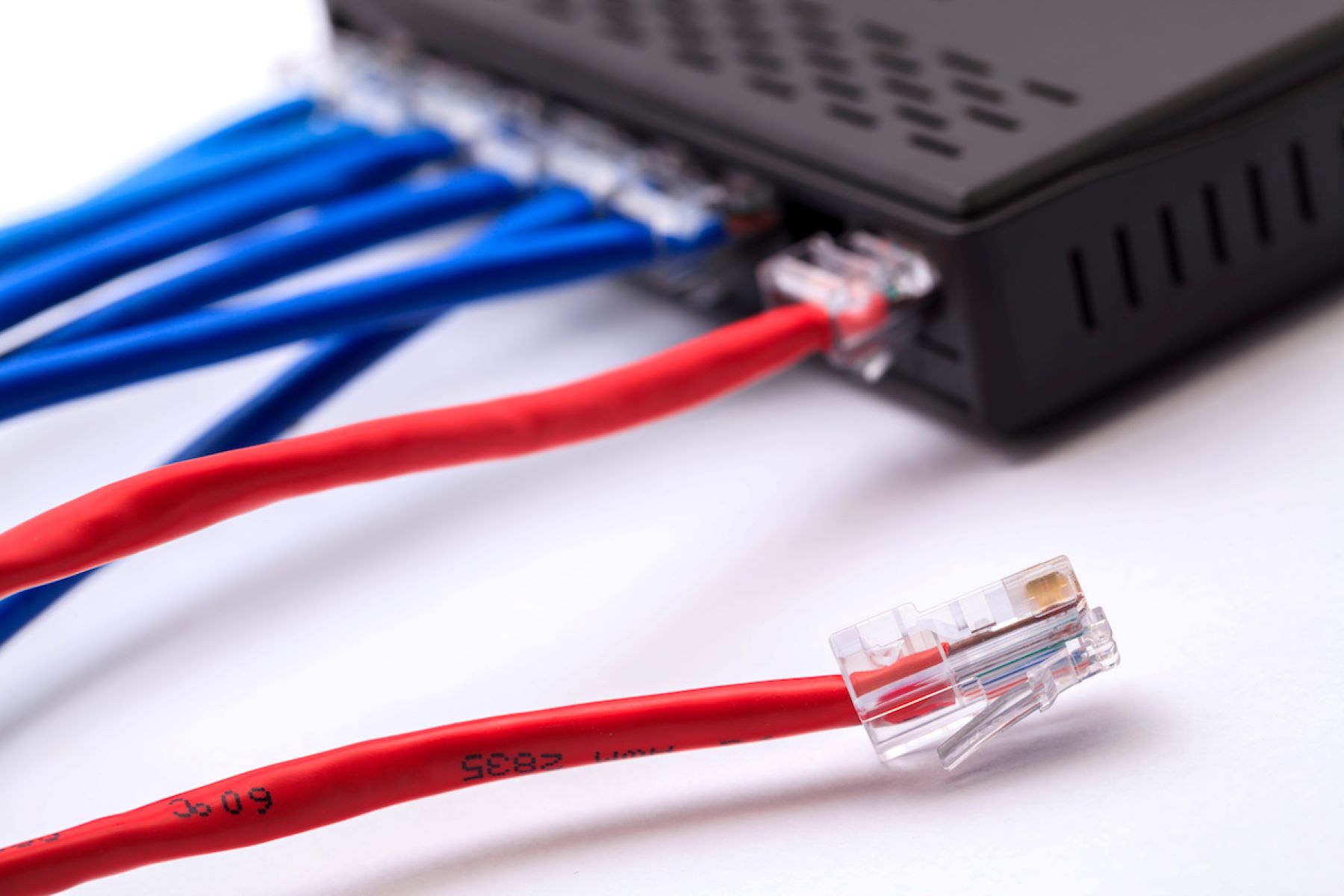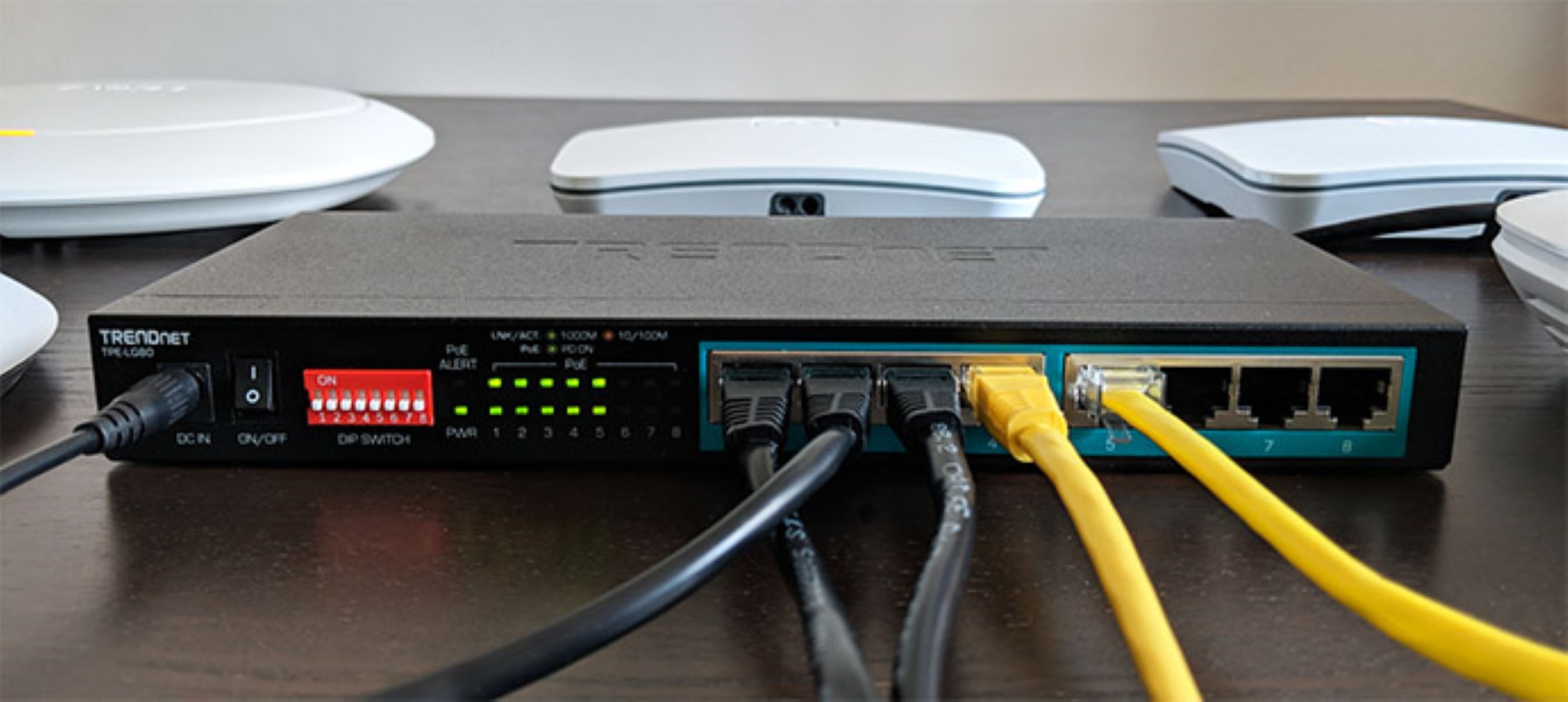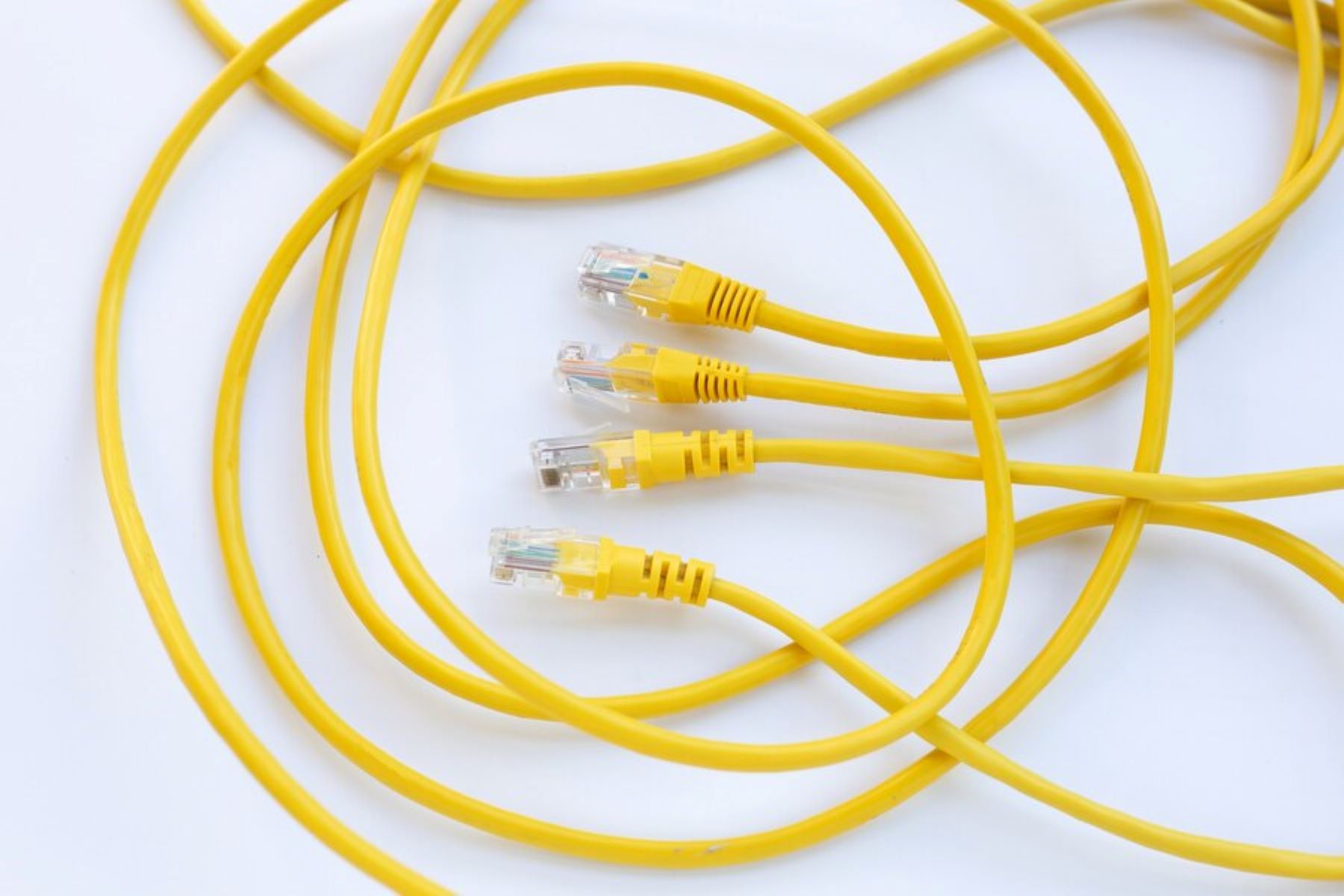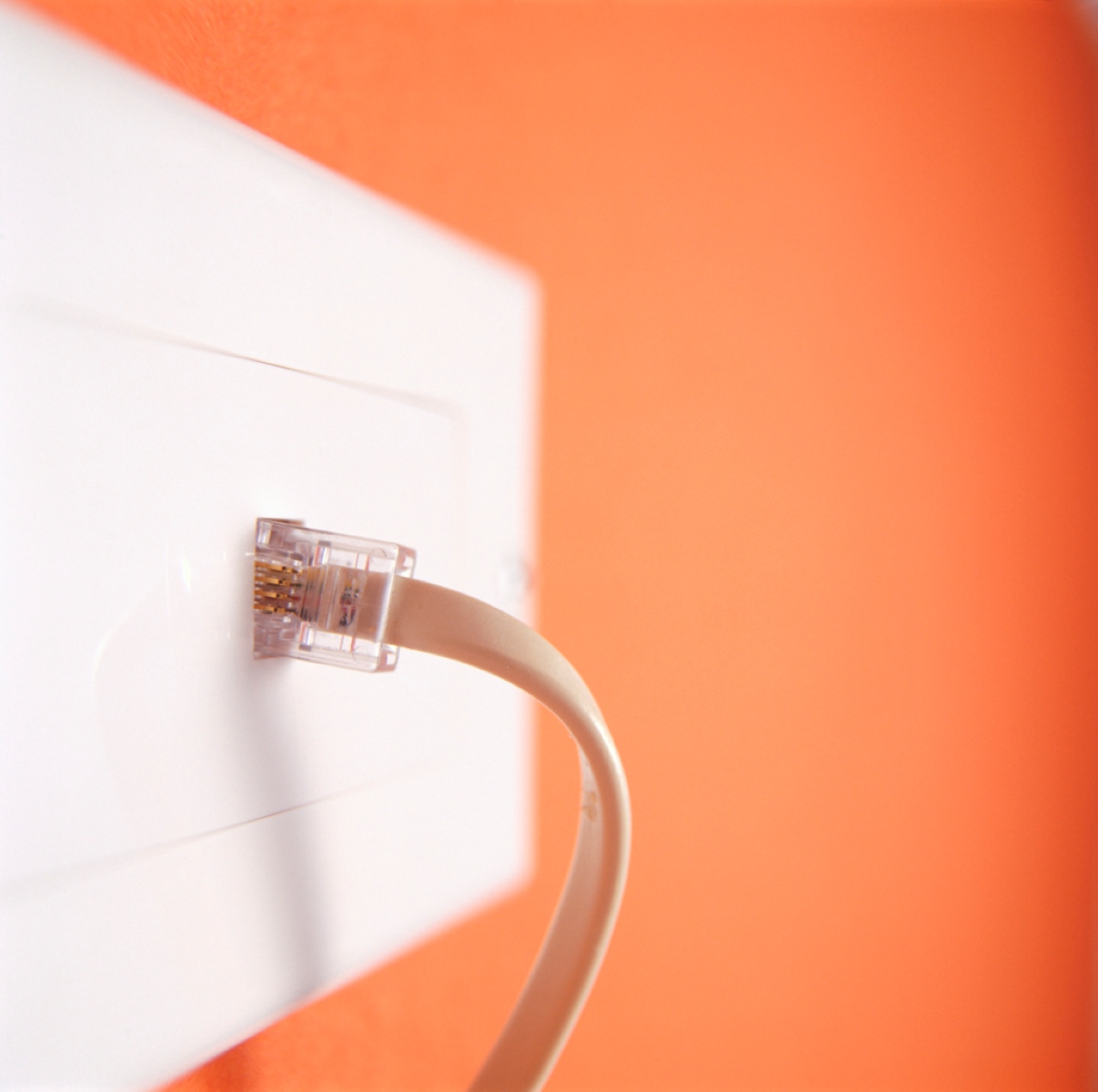Introduction
A star topology is a common network configuration where multiple devices connect to a central hub or switch. Each device, known as a workstation, has a physical connection to the central hub, enabling communication and data exchange between devices on the network. However, what happens when a workstation loses its physical connection?
In this article, we will explore the consequences of a workstation losing its physical connection in a star topology network. We will examine the impact on communication, network functionality, and workstation performance. Additionally, we will provide troubleshooting and solutions to help mitigate the effects of a lost connection.
Understanding the consequences of a lost physical connection is crucial for network administrators and IT professionals who need to maintain the reliability and efficiency of their network infrastructures. Whether it’s due to accidental disconnections, damaged cables, or other unforeseen circumstances, knowing the potential outcomes of such events allows for proactive steps to be taken to minimize downtime and ensure seamless network operations.
By the end of this article, you will have a comprehensive understanding of the implications of a workstation losing its physical connection in a star topology network and how to address this issue effectively.
What is a Star Topology?
A star topology is a type of network configuration where devices are connected to a central hub or switch. In this setup, each device, referred to as a workstation, has its own dedicated cable that runs directly to the central hub. This hub serves as the central point for communication between all the connected devices.
Unlike other network topologies, such as bus or ring, where devices are connected in a linear or circular manner, a star topology enables independent communication between workstations. Any communication between two workstations occurs through the central hub, which acts as a mediator for information exchange.
One of the key advantages of a star topology is its simplicity and scalability. Adding or removing workstations to the network is relatively easy as it does not disrupt the functionality of other devices. Additionally, this configuration provides easy troubleshooting, as identifying connectivity issues becomes straightforward with its centralized structure.
In a star topology, each workstation operates independently from one another. Therefore, if a workstation loses its physical connection, it is isolated from the network but does not impact the connectivity of the other workstations. However, the loss of a physical connection can still have negative implications for the affected workstation and the overall network functionality, which we will explore in the following sections.
Overview of a Workstation in a Star Topology
In a star topology network, a workstation refers to any device that is connected to the central hub or switch. This includes computers, printers, servers, and other network-enabled devices. Each workstation is assigned a unique address to ensure proper communication within the network.
Workstations in a star topology have a distinct advantage: they can operate independently without affecting the functionality of other devices. Unlike other network topologies, where the disruption of one device can compromise the entire network, a workstation in a star topology can disconnect or experience issues without causing a complete network failure.
A typical workstation in a star topology setup consists of three main components:
- Network Interface Card (NIC): The NIC is responsible for connecting the workstation to the network. It acts as the interface between the workstation and the central hub, allowing for data transmission and receiving. The NIC is usually integrated into the motherboard of the workstation or added as an expansion card.
- Physical Connection: A physical connection, typically an Ethernet cable, is used to establish a link between the workstation and the central hub. This direct connection ensures seamless communication between the device and the rest of the network.
- Device Functionality: Each workstation has its own specialized purpose within the network. This can range from a computer used for regular tasks like browsing and file sharing to a server responsible for hosting websites or managing data storage. The functionality of the workstation depends on its specific role within the network infrastructure.
Workstations play a crucial role in the star topology network as they act as both consumers and contributors of network resources. They can request and access shared data and services from other devices, while also providing their own resources for other workstations to access.
Understanding the components and functionality of a workstation in a star topology network is essential for troubleshooting connectivity issues and ensuring the smooth operation of the network as a whole.
Importance of a Physical Connection
In a star topology network, the physical connection between a workstation and the central hub is of utmost importance. This direct link enables the transmission of data, commands, and information between the workstation and the rest of the network. Without a reliable physical connection, the workstation’s ability to communicate and function effectively within the network is compromised.
There are several key reasons why a strong physical connection is essential:
- Data Transmission: The physical connection allows for the transfer of data between the workstation and other devices on the network. Whether it’s sending emails, accessing shared files, or streaming multimedia content, a stable and fast physical connection is necessary to ensure seamless data transmission.
- Network Security: A physical connection helps safeguard the network’s security by reducing the risk of unauthorized access or data breaches. By having a direct link to the central hub, the workstation can communicate securely with other devices, restricted to only those authorized to interact with it.
- Network Performance: A strong physical connection contributes to overall network performance. It ensures minimal latency and packet loss, resulting in faster data transfer speeds and smoother communication between devices. This is particularly crucial in scenarios where time-sensitive applications or services are involved, such as video conferencing or real-time data processing.
- Reliability and Availability: A reliable physical connection ensures that the workstation remains consistently connected to the network. This is vital for maintaining the availability of network resources and services. Uninterrupted access to applications, databases, and shared files is crucial for seamless workflow and productivity.
Without a solid physical connection, workstations in a star topology network may experience network disruptions, delays in data transmission, and even complete loss of communication. It is therefore imperative to prioritize the maintenance and integrity of the physical connection to ensure optimal network performance and functionality.
What Happens When a Workstation Loses Physical Connection
When a workstation in a star topology network loses its physical connection to the central hub, several consequences arise that can impact both the affected workstation and the overall network functionality. Let’s explore what happens in such scenarios:
- Loss of Communication: The most immediate effect of a lost physical connection is the inability of the workstation to communicate with other devices on the network. Without a direct link to the central hub, the workstation is isolated and cut off from the network. This means it cannot send or receive data, access shared resources, or interact with other devices until the connection is restored.
- Network Failure: While a single workstation losing its physical connection does not cause a complete network failure in a star topology, it can still lead to a degraded network performance or functionality. This is especially true if the affected workstation plays a crucial role, such as acting as a server or providing a critical service. Other devices may experience delays or disruptions when trying to access resources that depend on the disconnected workstation.
- Impact on Workstation Performance: The workstation itself is unable to function optimally without a physical connection. Applications, services, and processes that rely on network connectivity may experience errors, timeouts, or crashes. This can significantly impact productivity and workflow until the connection is reestablished.
It is important to note that the severity of these consequences varies depending on the specific setup and requirements of the network. Mission-critical networks with redundant connectivity options may have measures in place to mitigate the impact of a lost physical connection. However, in a standard star topology without additional redundancy, the loss of connection can lead to significant disruptions.
Swift detection and resolution of the issue are crucial to minimize the impact on both the affected workstation and the overall network. Troubleshooting and implementing appropriate solutions to restore the physical connection should be prioritized to ensure seamless network operations.
Loss of Communication
When a workstation in a star topology network loses its physical connection to the central hub, one of the immediate consequences is the loss of communication between the disconnected workstation and other devices on the network. The workstation becomes isolated, unable to send or receive data, and cannot access resources or services on the network.
The loss of communication has several implications:
- Inability to Send or Receive Data: Without a physical connection, data cannot be transmitted between the disconnected workstation and other devices. This means that emails cannot be sent or received, files cannot be shared, and real-time communication tools like instant messaging or video conferencing cannot be used.
- Limited Access to Network Resources: The workstation loses access to shared resources such as printers, servers, or databases that are crucial for its proper functioning. This can hamper productivity and workflow, especially if the workstation relies heavily on these resources for its operations.
- Isolation from Network Communications: The disconnected workstation is unable to participate in network-wide communications. Updates, notifications, and broadcasts sent to other devices on the network will not reach the isolated workstation, potentially causing it to miss important information or instructions.
- Lack of Collaboration: The loss of communication prevents the disconnected workstation from collaborating with other devices on the network. This can hinder teamwork and hinder the ability to work on shared projects or access shared documents.
The severity of the loss of communication depends on the role and significance of the disconnected workstation within the network. High-traffic workstations like servers or key operational devices may have a more significant impact on network functionality compared to individual user workstations.
To mitigate the loss of communication, it is essential to troubleshoot the physical connection issue promptly and restore the connectivity of the affected workstation. This can involve checking cables and connections, replacing damaged components, or reconfiguring network settings to establish a stable connection.
Next, we will explore the broader implications of a lost physical connection in a star topology network and the potential network failures that can occur as a result.
Network Failure
When a workstation in a star topology network loses its physical connection, it can result in network failures that impact the overall functionality and performance of the network. While the loss of a physical connection in a single workstation does not break the entire network, it can still cause disruptions and affect other devices connected to the central hub.
Here are some potential network failures that can occur:
- Delays and Disruptions: If the disconnected workstation plays a critical role in providing services or resources to other devices, the loss of its connectivity can lead to delays or disruptions in accessing those resources. Other workstations dependent on the disconnected workstation may experience timeouts or encounter errors when trying to access shared data or services.
- Reduced Network Performance: The network performance may be degraded when a workstation loses its physical connection. The central hub may experience increased traffic as other devices attempt to compensate for the disconnected workstation’s absence. This can lead to network congestion, bottlenecks, and slower data transfer speeds.
- Dependency on Redundancy: In networks with redundant connectivity options, the impact of a single workstation losing its physical connection may be mitigated by alternative paths or backup systems. However, in networks without redundancy, the failure of a workstation’s connection can have a more significant impact on network functionality.
- Potential Cascading Effects: Network failures are not always isolated incidents. If the disconnected workstation is critical for network operations, it can trigger chain reactions and affect other components of the network. This can result in a domino effect, causing widespread disruptions and compromises in network performance.
Addressing network failures caused by a lost physical connection requires identifying the issue and restoring the connectivity of the disconnected workstation. Administrators may need to troubleshoot the physical connection, check cables and connectors, or even replace faulty components to resolve the network failure.
Regular network monitoring, proactive maintenance, and the implementation of redundancy measures can help minimize the impact of physical connection loss and mitigate potential network failures. Ensuring a robust and resilient network infrastructure is essential for maintaining reliable communication and data transfer between devices within a star topology network.
Impact on Workstation Performance
When a workstation in a star topology network loses its physical connection, it can have a significant impact on the performance and functionality of the affected workstation itself. Without a stable connection to the central hub, the workstation’s ability to access network resources, communicate with other devices, and carry out its intended tasks is compromised.
Here are some key areas where the impact on workstation performance can be observed:
- Application and Service Disruptions: Applications or services that rely on network connectivity may experience disruptions or become completely unavailable. For example, email clients may fail to synchronize, cloud-based applications may become inaccessible, or database connections may be severed. This can cause productivity setbacks and hinder the smooth operation of the workstation.
- Slow Data Transfer: Without a physical connection to the central hub, the workstation may encounter slow data transfer speeds when accessing network resources or downloading/uploading files. This can result in delays and inefficiencies in completing tasks that require transferring large amounts of data over the network.
- Limited Resource Access: The disconnected workstation loses access to shared resources such as printers, network storage, or shared databases. This can affect the ability to print documents, retrieve necessary files, or collaborate with other network users, hindering productivity and workflow.
- Restricted Communication: Communication tools, such as video conferencing or instant messaging applications, may become unusable. The workstation may be unable to participate in meetings or receive real-time messages, impacting collaboration and hindering effective communication with colleagues and clients.
The impact on workstation performance varies depending on the nature of the disconnected workstation’s role within the network. Workstations with critical functions, such as servers or devices supporting essential services, may experience more severe consequences, leading to significant disruptions for the entire network.
Restoring the physical connection and troubleshooting the issue promptly are essential to minimizing the impact on workstation performance. Network administrators should prioritize resolving the connectivity issue, whether it involves checking cables and connectors, replacing faulty components, or reconfiguring network settings.
Implementing proactive measures, such as regular network maintenance, monitoring, and redundancy options, can help mitigate the impact of a lost physical connection and maintain optimal workstation performance within the star topology network.
Troubleshooting and Solutions
When a workstation in a star topology network loses its physical connection, it is crucial to troubleshoot the issue promptly to restore connectivity and minimize the impact on network functionality. Here are some troubleshooting steps and potential solutions to address a lost physical connection:
- Check the Physical Connection: Begin by examining the Ethernet cable, connectors, and ports to ensure they are properly connected and undamaged. Re-seating the cable or replacing a faulty cable can often resolve the issue.
- Verify Network Interface Card (NIC) Functionality: Check the NIC of the disconnected workstation to ensure it is functioning correctly. This can involve disabling and re-enabling the NIC, updating the driver software, or replacing the NIC if necessary.
- Restart the Workstation: Sometimes, a simple restart can resolve connectivity issues. Rebooting the workstation can refresh network settings and establish a new connection to the central hub.
- Reset Switch or Hub: If the issue persists, resetting the central hub or switch can help in some cases. This can be done by power cycling the device or performing a factory reset, but exercise caution as it may temporarily disrupt network connectivity for other workstations as well.
- Check Network Configuration: Review the network configuration settings on the workstation to ensure they align with the required parameters. This includes checking IP address settings, subnet masks, default gateways, and DNS configurations.
- Test with Different Ports and Cables: If available, try connecting the disconnected workstation to a different port on the central hub or switch, using a different Ethernet cable. This helps identify if the issue lies with a specific port or cable.
- Seek Professional Assistance: If the troubleshooting steps listed above do not resolve the issue, it may be necessary to seek help from a network professional or IT support team. They can perform advanced diagnostics and identify any underlying hardware or network infrastructure issues that may be causing the lost connection.
Preventive measures can also be implemented to minimize the chances of a lost physical connection. Regular network maintenance, cable management, and monitoring can help identify and address potential issues before they result in connectivity problems.
Remember, each network setup may have specific nuances and complexities, so it is essential to refer to the network documentation and follow best practices when troubleshooting or making any changes.
Conclusion
In a star topology network, the physical connection between a workstation and the central hub is vital for seamless communication, efficient data transfer, and optimal network performance. When a workstation loses its physical connection, it can have significant consequences on communication, network functionality, and workstation performance.
We explored the impact of a lost physical connection on a workstation in a star topology network, including the loss of communication, potential network failures, and the implications for workstation performance. We discussed the importance of maintaining a strong physical connection, ensuring reliable data transmission, network security, and overall network availability.
To address a lost physical connection, troubleshooting steps such as checking cables and connectors, verifying network interface card (NIC) functionality, and reviewing network configuration settings can help identify and resolve issues. Seeking professional assistance may be necessary for complex cases or persistent problems.
Preventive measures, such as regular network maintenance, effective cable management, and the implementation of redundancy options, can help mitigate the impact of a lost physical connection and maintain reliable network operations in a star topology.
By understanding the consequences and taking appropriate actions, network administrators and IT professionals can minimize downtime, restore connectivity, and ensure the smooth functioning of workstations and the overall network.

























